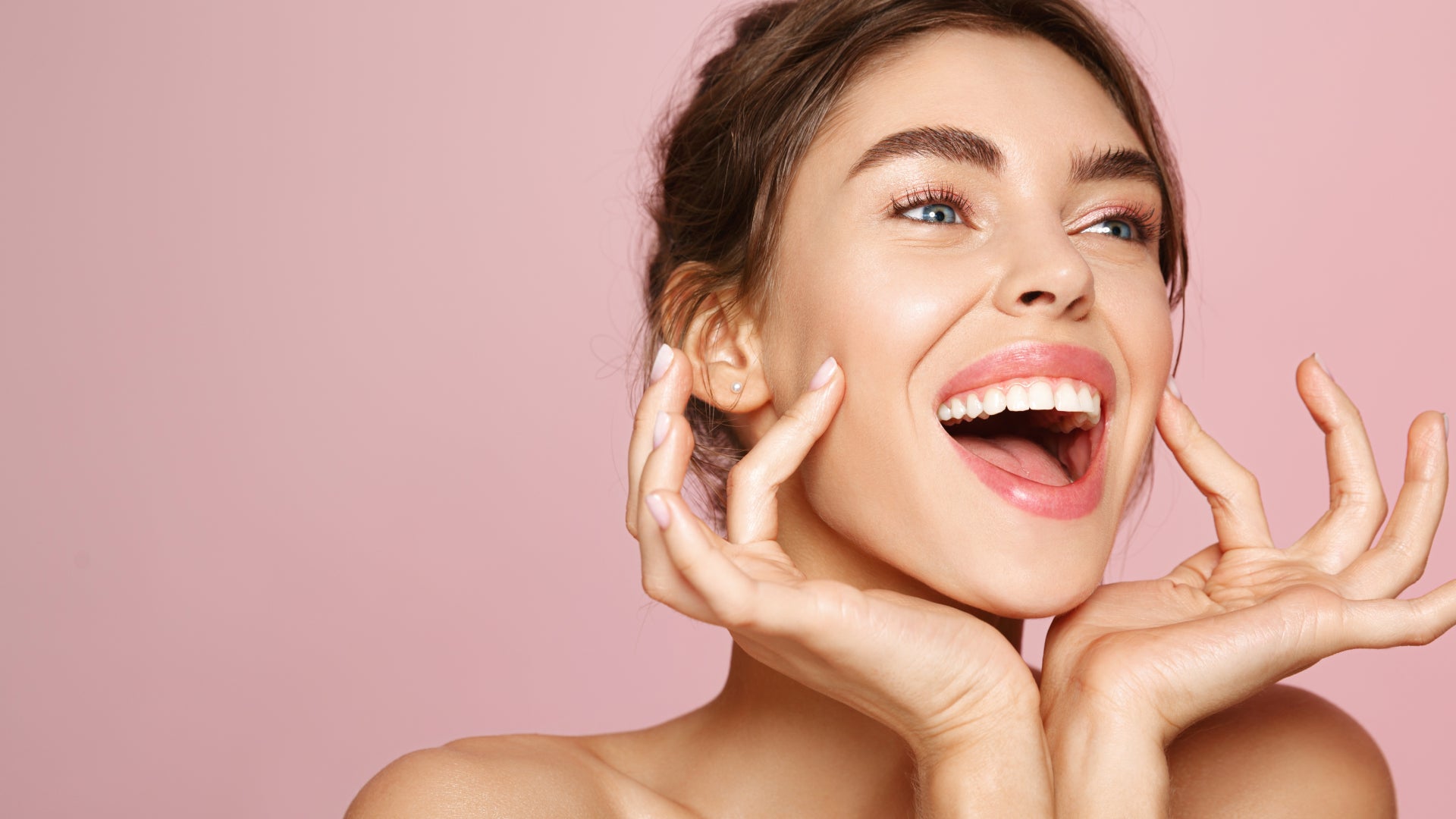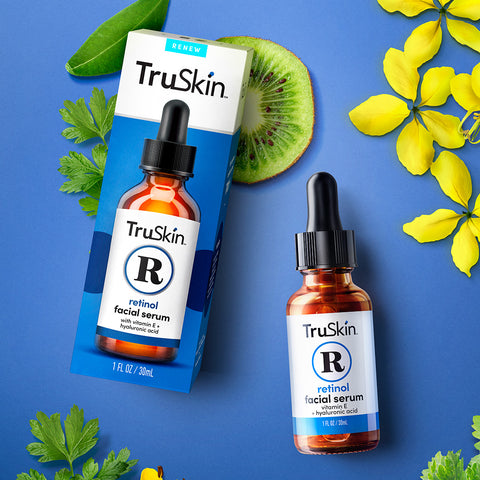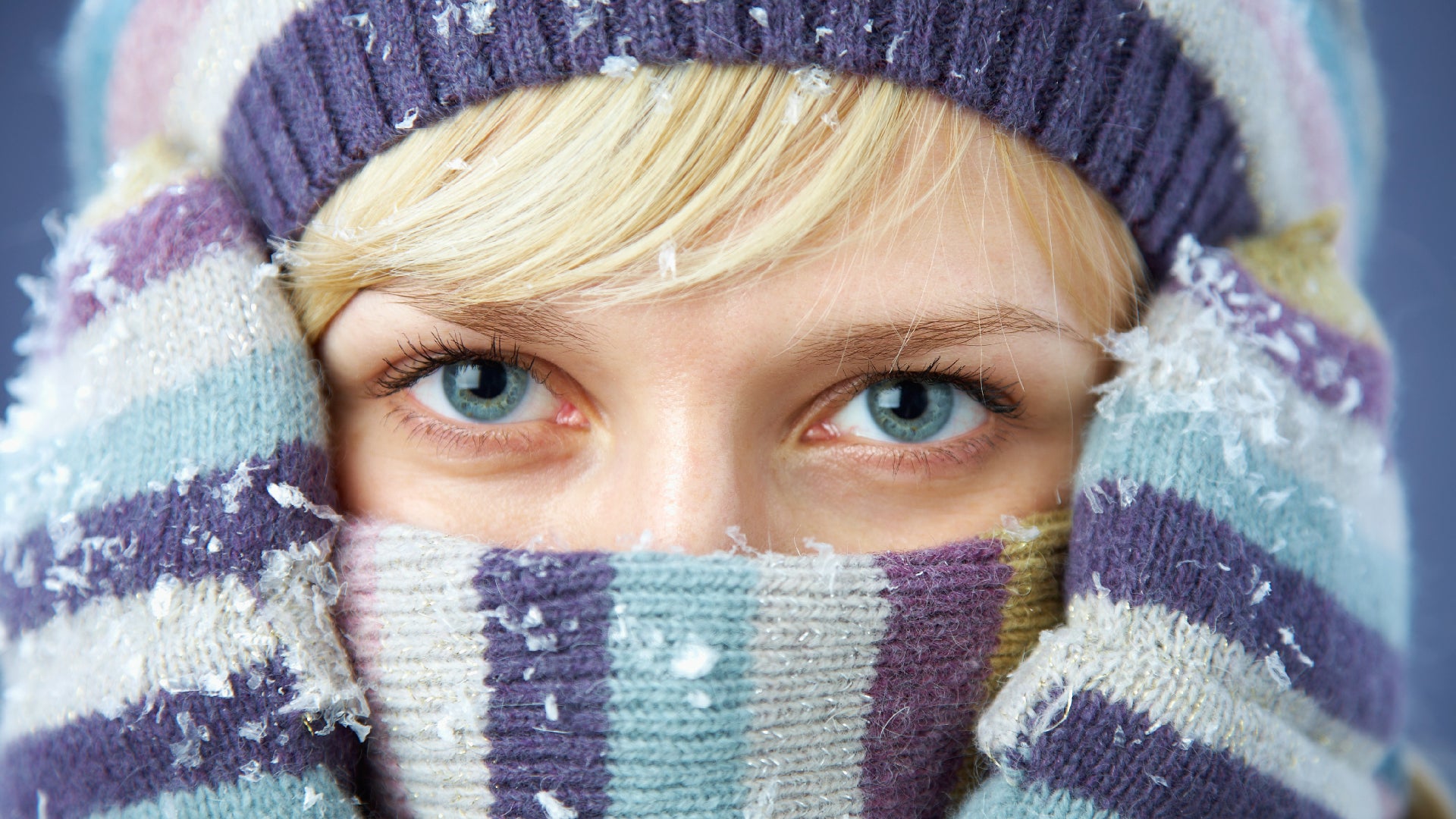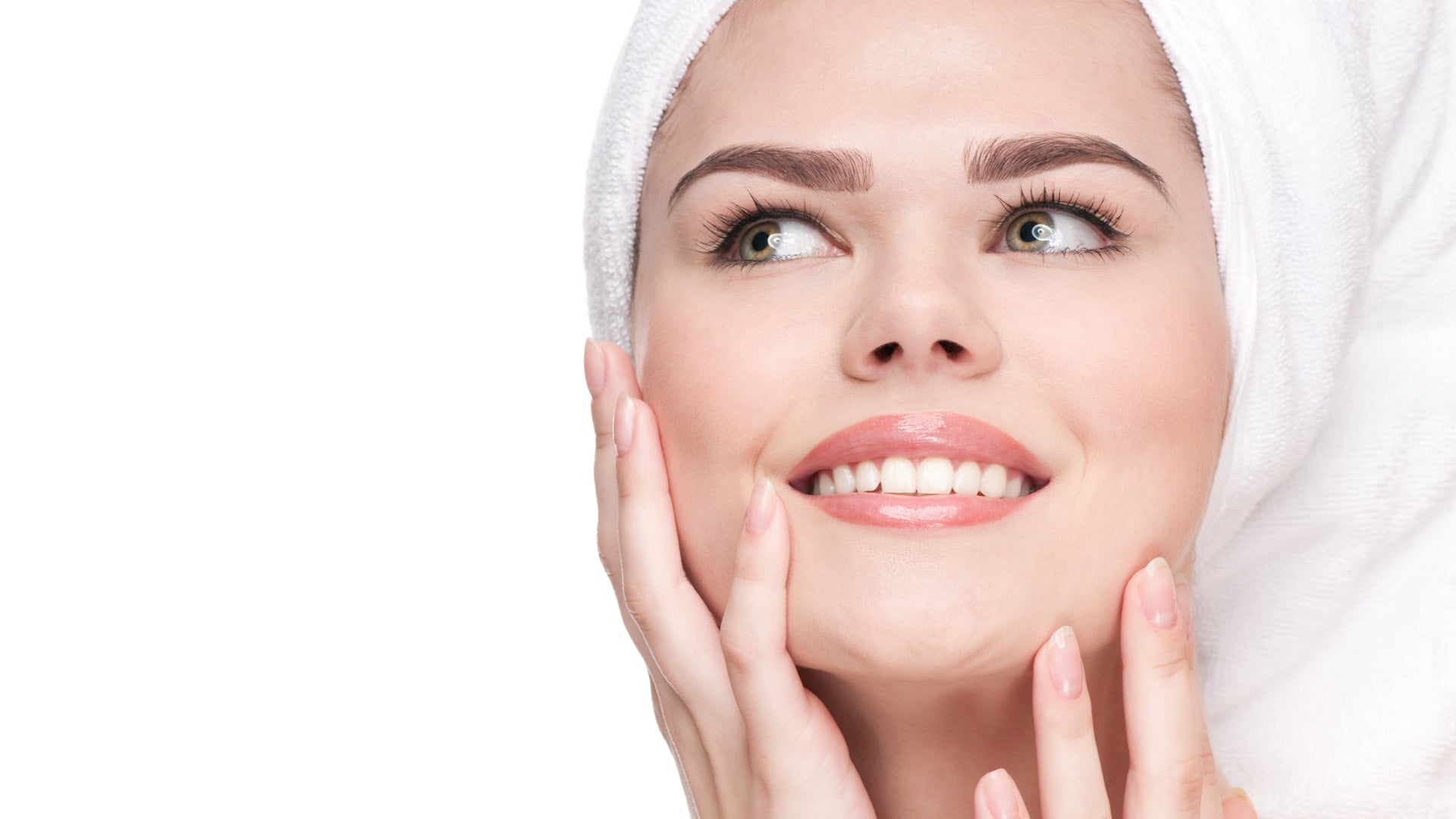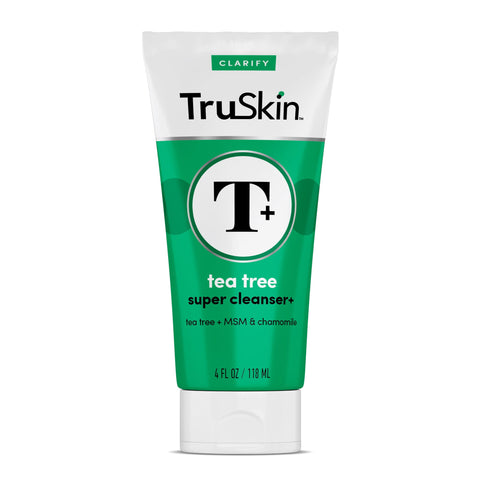
True Radical Honesty From Our Community
What To Do If You Hate Those Fine Lines Around Your Lips
Read MoreAdvice for all of your skin care needs
- all articles
- Acne
- Anti-Aging
- Collagen
- Combination Skin
- Company Announcements
- dry skin
- Exfoliation
- Eye Care
- Facial Redness
- Grooming
- Holidays
- Hyaluronic Acid
- Niacinamide
- Oily Skin
- Retinol
- Sensitive Skin
- Skincare
- Skincare Guide
- Skincare Ingredients
- Skincare Routine
- Skincare Tips
- Sun Protection
- Toner
- Vegan Skincare
- Vitamin C
- view all
- Acne
- Anti-Aging
- Collagen
- Combination Skin
- Company Announcements
- dry skin
- Exfoliation
- Eye Care
- Facial Redness
- Grooming
- Holidays
- Hyaluronic Acid
- Niacinamide
- Oily Skin
- Retinol
- Sensitive Skin
- Skincare
- Skincare Guide
- Skincare Ingredients
- Skincare Routine
- Skincare Tips
- Sun Protection
- Toner
- Vegan Skincare
- Vitamin C
-
Incoming... skincare goals that truly make a difference. Count us in.
We don’t know about you, but years of making pointless new year’s resolutions ‘just for the sake of it’ have made us somewhat over them. Sure, it’s great to have ambitions and personal goals to strive for, but forcing yourself to come up with something, just because it’s the start of a new year? That’s a hard pass from us.
Making skincare goals, however, is something we can totally get on board with. And if you’re reading this you’re probably in complete agreement. Because knowing you’re doing your best for your skin – even if you change only one habit or add just one extra product to your routine – is worth a thousand ‘I shall spend less at Starbucks’ false promises.
So, on that note, to follow are some very doable skincare goals for you to totally crush this year.
DO Reassess Your Skin
Your skin is not the same as it was ten years ago. Heck, it’s not even the same as it was this time last year. So, spend a few minutes taking a good, long look in the mirror to see what’s going on. Are you noticing some redness? Maybe a few extra dark spots have appeared? Perhaps your skin is feeling more dehydrated than it used to? Or, wait, is it weirdly oilier?
You can only deal with skin concerns if you actually know what they are, so make sure you’re totally on the ball with where your skin is at right now. Then you’ll be able to act accordingly with targeted skincare and better lifestyle habits.
DON’T Use Cleansing Wipes On The Reg
Face wipes are fine in a pinch but most of them are doused in drying chemicals that do your skin zero good. Granted, they might be called ‘cleansing wipes,’ but rarely do they actually cleanse your skin thoroughly – instead they simply move surface debris around a bit. Then there’s the fact that they’re mostly made from synthetic, non-biodegradable materials which end up hanging around in landfills for up to 100 (no joke!) years.
You might be tired, but make it a priority to cleanse your skin with a decent face wash morning and night. Try Vitamin C Brightening Cleanser which is so delightful, you’ll actually enjoy using it.
DO Moisturize Skin When Damp
You’ll have had undoubtedly heard this trick before, but we bet you don’t actually put it into practice, right? Well, try it. You see, applying moisturizing while your skin is still slightly damp from cleansing helps to seal in those tiny droplets of water that are left hanging around at the surface. It’s basically free moisture your skin will really benefit from – especially during winter when the air is extremely drying on your poor skin. C’mon, when we put it like that, it seems insane not to.
DON’T Give Up On Retinol
Retinol is one of the most effective topical ingredients for the skin. It deals with premature aging, it helps keep acne under control, it protects your skin from environmental damage, it does your laundry. OK, so that last one is a bare-faced lie, but you get where we’re coming from.
The problem with retinol is that its potency can be hard to deal with – especially during the first few weeks when it can make your skin especially dry, red, flaky and even a little itchy. As long as it’s not causing discomfort, however, a little initial irritation is OK, it’s just your skin adjusting, so don’t give up. Simply reduce your frequency of use as your skin acclimates, then build back up again. Easy.
DO Give Your Neck Some Love
You may be meticulous with your facial skincare routine but if your habits stop at your chin, you’re doing yourself a real disservice. How so? Because your neck is one of the first places to show signs of aging.
The skin on your neck has fewer sebaceous glands than your face, you see, which means it can’t produce as much oil to keep it soft and moisturized. This is seriously bad news in the fight against dry skin, fine lines, wrinkles and sagging because moisture is essential for the firmness and elasticity of your skin.
Whatever you do to your face, continue down to your neck and décolletage area. Cleanse it, tone it, treat it with serum, moisturize it (we love Renewing Longevity Moisturizing Cream for the neck area) and protect it from the elements. It’s the least you can do.
DON’T Fret About Your Imperfections
If we asked you to name something you hate about your skin we bet you could reel off a few without taking a breath. Well, do you know what, those crow’s feet you hate or monthly breakouts that drive you crazy are not worth crying over. You’re not perfect. But big deal, who is? So instead of sweating over the bad stuff, do the best you can for your complexion with a consistent skincare and good lifestyle habits. And, instead of feeling all the skin self-hate, try to focus on the good. Sure, you have fine lines around your mouth, but hey, isn’t your forehead looking pretty fabulous?
DO Trash Old Products That Rarely See The Light Of Day
Skincare products do not last forever. In general, they’re usually good for around one year if previously opened or two years if unopened. Unless it says otherwise on the label, of course.
Go through your vanity and trash anything that’s older than two years. Allowing your products to collect dust in the vain hope you might go back to them one day? Not gonna happen.
DON’T Underestimate Your Bedtime Skincare Routine
Sleep time is crucial for your skin. As your brain goes into rest mode, your skin gets super busy. Blood flow increases to nourish it with valuable nutrients; cell turnover accelerates to bring fresh, healthy skin cells to the surface; collagen production revs up big time and your natural antioxidant system kicks it to help nix any free radicals which may have built up during the day.
If you go to bed with unclean, unmoisturized skin, this whole rejuvenation process becomes compromised. So don’t do that. Make sure you’re doing everything you can to ensure your skin is thoroughly cleansed before bed, then apply your favorite serum and moisturize with Vitamin C Deep Hydration Night Cream.
DO Exfoliate More
As you get older, your skin doesn’t turn over as quickly. What does this mean? Well, when you’re in your 20s the life cycle of a skin cell is around 28 days during which time it’s created, moves up to the surface, then dies and sloughs away. Great. As you age, however, this process slows down and dead skin cells get ‘stuck’ at the surface where they cause uneven texture, blocked pores and dull-looking skin.
The good news is that exfoliation helps keep things moving at a more favorable rate, so how about increasing the frequency of your exfoliation game going forward? This can mean anything from once a week to three or four times a week but it depends on your skin so play around to find what works.
Our Vitamin C Gentle Face Scrub is fantastic for gently brightening and exfoliating your skin without drying it out making it ideal for regular use. You could also try our 6% AHA, BHA + PHA Liquid Exfoliant which does without scrubbing particles and instead uses gentle skin acids to slough away dead cells. Neither are a bad choice. Far from it.
DON’T Ignore Sketchy-Looking Moles
Noticed a change in a mole? Get. It. Checked. Out. Moles that change in color, shape, texture or just start to feel or look wrong should always be immediately looked at by a qualified expert to rule out serious concerns such as melanoma. The chances are your mole is totally fine or, at least, can be treated quickly and painlessly, but it’s better to be on top of them.
The Easiest (But Most Effective!) New Year Skin Goals
read more -
Reckon you’ll never see bright eyes and a glowing complexion again? On the contrary. Here’s how to hit the reset button on over-indulged skin.
Hangovers are bad enough. The headache. The foggy memory loss. The nausea. The maxed-out credit card. Oh the shame of it all. Plus there’s nobody to blame but yourself. Eugh, why do we do it to ourselves? You’d think we would have learnt better by now.
Ha, fat chance.
Another thing. Is it just us, or as we get older, don’t hangovers feel 3,000 times worse? And, hold on, but why does our skin look so freakin’ terrible? Surely that didn’t happen in our 20s right?
The truth is, hangovers do get worse with age because your body’s metabolism decreases allowing alcohol to hang around in your system for way longer than you’d like. Also, your liver becomes less efficient which means its less able to cope with all those toxins that alcohol throws at it. It will get there eventually but, again, it will take way longer than a 20-year-old liver. There are also other factors to take into consideration. Your body weight, whether you're taking any medication, all this adds up to longer, worse hangovers and ruddy-looking skin as a consequence.
Sigh.
How Alcohol Affects Your Skin
Alcohol affects your skin in a number of ways. Here are the biggest things you'll notice after a night (or two) on the sauce...
* Alcohol is a diuretic which means that it increases urine production, making you pee more frequently and therefore lose vital water. Cue dehydration and more visible fine lines.
* Excessive water loss also causes your body to miss out on vital vitamins, minerals and nutrients that help ‘feed’ your skin and strengthen its barrier function. Cue dullness.
* Alcohol causes your blood vessels to dilate. Cue redness and flare-ups in existing conditions like rosacea.
* Ever woken up after a boozy night out only to feel like you’ve slept for minutes, rather than hours? That’s because alcohol unbalances your sleep, causing you to wake up throughout the night. Cue dark under eye circles and puffy skin.
* Then there are all those free radicals that form and screw up your collagen and elastin. Cue accelerated skin aging.
5 Tips For Rejuvenating Morning-After Skin
No matter that we know how bad drinking excessive amounts of alcohol is for our health and our skin, we still do it. So if you find yourself experiencing some serious morning-after-the-night-before skin, here are five emergency sk-invigorating (see what we did there?) tricks to try.
1. Wake Up Your Skin
Even just stepping in the shower and letting the water fall over your body can instantly lift a hangover. But to really get your blood flowing and thus encourage oxygen and nutrients to flood to your skin, we recommend a good (but gentle) exfoliation session. Our energizing Vitamin C Gentle Face Scrub is awesome for hungover skin as it also contains brightening whizz-kid, vitamin C – c’mon, it’s right there in the name!
Offering the effects of a mini facial (but with minimal effort), exfoliation helps clear out your pores and get rid of dead, dulling skin cells from the surface of your skin. It also boosts collagen production and smooths out the skin making it better able to absorb all the other goodies you’re about to treat it with. And trust us, your skin needs all the help it can get right now.
Gently work your scrub over your entire face and neck, using circular motions to lift and smooth out the skin as you massage it all over. And if you can bear it, try a cool rinse to finish. It’ll feel pretty savage at the time but, trust us, it’ll make you feel a million times better in the long-term.
2. Calm Redness
Facial flushing and booze go hand-in-hand for many people so if that includes you and you find that your redness lingers way into the next day, keep your morning-after routine simple and calming. Avoid exfoliating acids like glycolic and salicylic, and stick with gentle cleansers, hydrating toners and treatments that contain de-stressing ingredients like ceramides, aloe, vitamin E and niacinamide.
We love treating our skin with Rose Water Refreshing Facial Toner after a particularly boozy night out. This one-ingredient-only (er, rose water) facial spritz instantly calms and hydrates the skin after cleansing, plus it feels cooling and refreshing which is perfect when, inside, you feel neither of those things!
TOP TIP: In future, try to stick with clear spirits rather than red wine or dark liquor. Clear spirits like vodka, tequila and gin contain less histamines and are less likely to aggravate the skin or cause inflammation.
3. Reduce Puffiness
Too much booze makes your body want to retain water in a bid to combat dehydration. And fluid retention is the pits for your skin, inevitably making your face – and especially the area under the eyes – look puffy and swollen. It doesn’t help that you’ve also been starved of quality sleep which raises your levels of cortisol (the ‘stress’ hormone) which alters the salt balance in your body and forces it to retain even more water. Ever woken up after a big night out with under eyes bags the size of China? Yeah, this is exactly what we’re talking about.
To help pep up your face and reduce swelling, try a deep massage with your morning cleanse. Your hands are a powerful tool for getting blood flowing and improving lymphatic drainage so spend a few minutes working on your face to help depuff your skin.
When it comes to your eyes, place cold, used tea bags, cucumber slices or teaspoons over them and relax for 10 minutes. Anything cool will help reduce swelling by narrowing the blood vessels. Then, for an extra shot of depuffing freshness, follow with Depuffing Longevity Eye Cream.
4. Enjoy A Hit Of Multivits
Similar to how your oral multivitamins will give your body a much-needed pick-me-up, their topical cousins will also make your skin feel (and look!) a hundred times better. Vitamin C helps boost energy while vitamin E soothes and calms your skin. Then there are your Bs, D, F and K which all work together to balance the skin, neutralize damaging free radicals, protect your collagen supplies and strengthen the barrier function.
Our Multivitamin Facial Serum is a great post-party treatment because not only does it contain all of the above but it’s chock full of minerals and electrolytes for a complete, healthier-looking skin overhaul. Apply just a few drops to your face and neck after cleansing and toning and nobody will ever know about that extra shot of tequila you downed when you should really have been getting an Uber.
5. Load Up On Hydration
Morning-after thirst is real. Not only for your entire sorry being, but for your skin, too. So as well as drinking plenty of fluids to reduce nausea and a banging headache, you need to rehydrate and moisturize your skin from the outside in.
If you have some kind of intensely hydrating mask at hand, that’ll go a long way to taking the thirst away from parched skin. Look out for ingredients that draw water to the surface. These are called humectants and include things like glycerin, aloe vera and the biggest crowd-pleaser of them all, hyaluronic acid.
Our Hyaluronic Acid Facial Serum contains all three of these big guns and believe us when we tell you that your skin is going to lap it all up! Apply it to damp skin to make the most of surface moisture, then finish with a rich day cream that contains botanical oils, ceramides and/or fatty acids to help seal it in for the rest of the day.
Our favorite post-party moisturizer? Undoubtedly Vitamin C Brightening Moisturizer which blends antioxidant-rich green tea with jojoba oil and a cheeky hit of vitamin C to really get your glow back on.
Now, who's ready for another night out? Anyone?
These Skincare Boosts Are Just What Hungover Skin Needs
read more -
Don’t let fragile, wintry skin and boozy breakouts ruin your skin when the rest of you is ready to rock the party circuit.
It’s the season of champagne, bright lights, festive apps and Santa hats and we, for one, are thrilled. But as much as we love all the fun and fabulousness of the holidays, your skin can take a real beating. Cold, dry weather; warm, steamy bars; a little more alcohol and a lot less sleep can all add up to stress on your skin, compromising your barrier function and throwing your moisture levels out of whack.
Granted, if you have the skin of an angel, you might not notice issues with dryness, shiny foreheads or annoying breakouts during the party season. Well, lucky you because for the other 99.99999 percent of us, party skin often needs an extra bit of TLC to look and feel as high-spirited as our moods.
Here’s how to help get your skin on its merry way this festive season…
One Week Before
To truly get your skin in the right frame of mind for partying, you have to start looking after it early. A good week in advance, in fact. Of course, we know you have a great and consistent skincare routine up your sleeves, period, but there are three things you should really concentrate on in the week up to a big do.
1. Chemical Exfoliation
A great way to kick-start your skin into looking more plump, energized and fresh, is to embrace exfoliating acids. These are the AHAs, BHA and PHAs of the world and include powerhouses like glycolic, salicylic and lactic acids.
Try applying 6% AHA, BHA + PHA Liquid Exfoliant daily to cleansed skin to help boost cellular turnover, improve collagen synthesis and give sluggish skin a real kick in the booty.
2. Facial Massage
A simple facial massage is awesome for improving lymphatic drainage and blood flow. It gets everything moving thus helping to remove toxins while boosting nutrients and oxygen to the surface of the skin – super important for the party season when salty snacks and boozy beverages zap all the life from your skin. Simply work your hands all over your face and neck while cleansing each morning and night, taking your time to lift and smooth the skin in circular motions. You could also invest in a face roller or gua sha tool if they’re your jam.
3. Energizing Serum
While we wouldn’t suggest doubling up on your coffee intake (ever!), adding topical caffeine to your skincare routine will do your complexion all sorts of favors. An incredible antioxidant and with lots of anti-inflammatory powers, caffeine is a fantastic way to counteract all those free radicals that stress, lack of sleep and a poor diet produces. Gold star right there.
Caffeine also energizes your skin by tightening the blood vessels and stimulating circulation. Say hello to brighter, firmer skin and less puffiness and under eye bags as an added bonus. Get involved by applying Caffeine Facial Serum to your skin morning and night.
The Night Before
Big night out tomorrow? Then the following are some super effective ways to ensure your skin is clean, clear, beautifully hydrated and ready to partay!
1. Double Cleanse
We’re not massive fans of double cleansing – it just seems a bit excessive, as a rule. However, do it gently and on the odd occasion, and it can truly help to give your skin a proper ‘clear out,’ leaving you with a smooth foundation for some serious party makeup (if that’s your thing, of course!).
To double cleanse with success, first use an oil-based makeup cleanser to remove makeup, sebum and any other oily stuff from your skin. Then, go for a water-based cleanser to get rid of other surface debris while boosting your complexion with skin-loving ingredients like vitamin C, minerals, aloe vera or plant extracts. We love Charcoal Clarifying Cleanser for a party season detox.
2. Facial Steam
Steaming your face increases perspiration to help remove toxins and boosts blood flow to get oxygen and lots of nutrients flowing to your skin. Win-win. What’s more it’s arguably the easiest and cheapest (aka: free!) way to give yourself the results of a spa-like facial in the comfort of your own home.
Simply place your face over a bowl of recently boiled water (although not freshly boiled, that’ll be too hot!). Place a towel over your head to trap in the steam and hold your face over the surface of the water without getting too close for about 10 minutes. Just remember to always follow with moisturizer. Speaking of which…
3. Layered Hydration
Before bed, baby your skin with as much hydration as it will take – without overloading it with heavy coats of rich creams that might block your pores, of course. That can be disastrous. The best way to crush this? With layers. First up, smooth on a moisture-magnet serum like Hyaluronic Acid Facial Serum then wait a few seconds before applying moisturizer over the top. We have tons to choose from but a current favorite comes in the form of Renewing Longevity Moisturizing Cream which contains skin-reviving bakuchiol (just like retinol, but gentler on the skin!), plus snow algae to boost radiance and protect your skin from any party stress factors!
The Day Of
OK, it’s crunch time. Hopefully, if you’ve kept to your routine and added in a few choice extras, your skin is ready to glow – who needs makeup, anyway!? However, if you still need a little pick-me-up, try these last-minute glow-getting tricks.
1. A Morning Scrub
First things first: don’t overdo it with the exfoliation, people. If you’ve been applying a chemical exfoliant in the run-up to party time, a facial scrub might be a tad excessive. However, if you’ve not had time to get ahead of the exfoliation game, a face scrub is game-changing for instantly smoother, brighter-looking skin. Grab our Vitamin C Gentle Face Scrub as a matter of urgency, and smooth it all over your face and neck, using gentle circular motions to work it all over.
2. Vitamin C
We rate very little above topical vitamin C when it comes to rejuvenating ingredients that get the job done. So, apply the best vitamin C money can buy after cleansing and feel smug in the knowledge that your skin has started off the day right. Sure, it may end the day a little tipsy and full of sugar and salt, but at least you started well and, hey, we have just as many great tricks for hungover skin as we do for party prepping!
Try our Vitamin C Super Serum+ for a punchy pack of skin brightening goodness.
3. Ice Globes
A favorite with makeup artists for prepping celebrities’ skin for red carpet events, ice globes are glass or metal wands that have balls on the ends and are kept in the fridge or freezer. They're kind of like rubbing ice cubes all over your skin without the watery mess or potential skin damage.
Awesome for depuffing the eye area, ice globes also work wonders on facial redness, inflammation and sluggish skin. Cleanse your skin first, then apply serum before working them over the skin for 10 minutes or so. Use upwards movements to lift your skin and add radiance, or downwards strokes to encourage lymphatic drainage and reduce swelling. But make sure you don’t press too hard as this could drag and damage your skin.
Finish with moisturizer and you are ready to, well, get ready!
How To Prime Your Skin For The Party Season
read more -
Heard about retinol sandwiching but clueless about what it is or whether you should be getting on that train immediately? Here’s what we know…
Retinol offers an incredible solution to many skin woes. Hate your monthly breakouts? Try retinol. Worried about wrinkles catching up on you way too quickly? Retinol’s your guy. It’s true, retinol is the gold standard in skincare ingredients – just ask your dermatologist; we’d put a lot of money on them being in complete agreement.
But retinol isn’t all moonlight and roses. In fact, many people find that it’s pretty devilish on their skin, causing all sorts of irritating side effects that, frankly, make it not worth the hassle. You know the score, think redness, itching, flaky skin and extreme dryness.
This is why you’ll see countless blog posts and viral videos about how best to make retinol work for your skin type without causing all the bad stuff. Spoiler alert: if you choose the right formulation and apply it slowly and carefully, most skin types can totally appreciate the benefits retinol has to offer.
Reckon you’ve tried all the tricks but still can’t get on with retinol on a regular basis? Then you have options. The first is to try bakuchiol which is a natural and far gentler alternative to retinol. We’re huge advocates of this just-as-awesome ingredient as it works in a similar way to retinol, encouraging cell turnover and accelerating collagen production. In fact, we love it so much that we based an entire collection of healthy aging formulations around it. Check out the range here.
The other options is to try retinol sandwiching, a ‘trend’ that #BeautyTok is all over, but one which, in fact, has been around for many years…
What Is Retinol Sandwiching?
Retinol usually comes in the form of a serum which is applied to cleansed skin before moisturizer. Retinol sandwiching, however, switches things up. Don’t worry though, it’s nothing too tricky but is a very easy technique. You simply apply moisturizer before your retinol serum, then another layer afterwards, creating the proverbial sandwich effect with the retinol being your filling and moisturizer the bread.
Why Is Retinol Sandwiching A Thing?
As skincare ingredients go, retinol is arguably the best but, as we previously mentioned, its benefits are often outnumbered by its downsides – especially if you have particularly sensitive skin. Of course, introducing it slowly into your skincare routine is a great way to reduce the risks of unwanted side effects because this allows your skin to acclimate to such a potent powerhouse.
And there are many other ways to help you reduce irritation. One of which is the retinol sandwich.
Not to be taken literally (please don’t smother retinol serum over your favorite sourdough – like, ever), retinol sandwiching is particularly good for dry skin but can be a useful tool for reducing all kinds of irritation and sensitivities.
Why is the retinol sandwich so good for the skin? Well, it creates a kind of buffering effect, adding a layer of product between your skin and the retinol which helps to slow down its absorption and reduce its potency. Not to mention the added moisturization as an extra bonus. All this means that you’ll likely be able to use your retinol serum more frequently.
Does Sandwiching Make Retinol Less Effective?
Yes. Most moisturizers contain oils and water which kind of ‘dilute’ the retinol, making it weaker and less effective. But if you’re choosing to make yourself a retinol sandwich, you’re probably doing so because you have sensitive skin and want to reduce the irritation it may potentially cause. So making it weaker is kind of the point, right?
Is Retinol Sandwiching Right For Your Skin Type?
Honestly? That’s a question only you can answer. The truth is, if you use it wisely, most retinol formulas can be successfully built into your skincare routine without the sandwich method. That being said, nobody knows your skin better than you, so if you feel it may help you to enjoy the benefits of retinol, there’s no harm in trying.
All we can say is that if you want to give it a go, make sure to choose the right moisturizer for the job. Here’s a quick checklist for you.
✅ Go for a lightweight lotion. This will be better than a rich, heavy cream because it will at least allow a little of the retinol to get through to the surface of your skin.
❎ Avoid moisturizer that contains potent, active ingredients. Certain ingredients may react with the retinol and actually increase your chances of redness and irritation.
✅ Look out for gentle hydrating ingredients. Things like hyaluronic acid, glycerin and aloe vera are your friends here.
Other Tips For Making Retinol Work For You
1. Always Patch Test Retinol First
Yes, patch testing is boring and certainly not for the impatient, but it’s important and a great way to know whether a certain ingredient is going to be the right match for your skin. Patch test any new retinol product on a discreet area of your skin first. Then leave it for 48 hours to check for adverse reactions before using it as recommended.
2. Use It On Dry Skin
Many ingredients play well on damp skin but moisture can increase the absorption of retinol, simultaneously increasing the chances of irritation. Better to be safe by applying it to skin that's dry.
3. Go Slow And Go Steady
We’re all about the 1-2-3 retinol rule. When starting out, apply your product once a week only, for one week. Then apply it twice a week for two weeks and finally, go for three times a week for three weeks. This helps your skin build tolerance and allows you to eventually be able to apply it every night.
4. Apply Sunscreen Every Morning
Don’t let damaging UV radiation screw up all that fresh new skin retinol is helping to bring to the surface. Generously apply SPF 30 Mineral Sunscreen every morning as the final step in your routine.
But you knew that. Didn't you? DIDN'T YOU?
The Pros & Cons Of Retinol Sandwiching
read more -
No idea why you’re getting an influx of acne right now? Many lifestyle habits can trigger your breakouts – and sometimes they’re found in the most unsuspecting places.
As you know, acne is caused by one thing and one thing alone: an excess of sebum that causes your pores to become blocked with oil, dead skin cells, bacteria and other impurities. Eating too much chocolate doesn’t give you pimples. Neither does moisturizer. Sure, they can trigger breakouts if you’re genetically susceptible to them, but acne isn’t caused by uncleanliness, a poor diet or crummy skincare routine. It’s caused by blocked pores. End of.
OK, so this begs the question: why bother trying to cure them if your breakouts are totally out of your control? Well, here’s the thing. You can’t change your genes, that’s for certain. However, what you can do is keep acne-triggering factors under control to help lessen the blow. Sleeping well, reducing emotional stress and eating a healthy, well-balanced diet; all these things are important for maintaining balanced sebum and therefore reducing the likelihood of you breaking out week after week.
But there are also some less obvious reasons why you face might be suffering with regular breakouts. So if you’ve already dispensed with things like smoking, poor cleansing and too much exfoliation, but you’re still getting pimples on the reg, it might be time to look at some of the more unexpected areas of your life.
On that note, read on for five slightly more unusual causes for your breakouts.
1. Your Pillowcase
Getting enough beauty sleep is crucial for the health of your skin, but if you’re sleeping on a dirty pillowcase for a solid eight hours every night dirt and bacteria is inevitably going to build up and irritate your pores. This is especially true if you sleep on a synthetic pillowcase because man-made fibers don’t absorb sweat as effectively as natural fibres like cotton or linen.
The answer? Go natural all the way, for starters. Also, cleanse and moisturize your skin before bed to reduce the amount of grime getting on your pillowcase. Tea Tree Super Cleanser+ is a great acne-fighting cleanser that balances and clarifies your pores. Follow this with Retinol Moisturizer to lightly hydrate and moisturize your skin while boosting cellular turnover to keep your pores free of dead skin cells.
Finally, wash your pillowcase every three or four days. And ditto, your face towel. Old, dirty towels that are used by the whole family for drying their hands and who-knows-what-else are another breeding ground for germs and bacteria. Do you really want to be swiping this all over your freshly cleansed skin? Thought not. So, invest in a couple of cotton face towels for you and you alone and wash them every other day.
2. Your Makeup & Hair Products
Your skincare routine might be spot on, but what about your makeup and hair products? Rich hair conditioners, for example, are notorious for containing heavy ingredients like cocoa butter and coconut oil which, granted, are incredible for moisturizing your precious locks, but are not so great for acne-prone skin. Of course, we know you’re not smothering your face with conditioner but still, it can settle on your face when you rinse your hair so always cleanse your skin after, never before conditioning.
Makeup can similarly clog up your pores, especially if you use formulations that contain oil. So don’t do that. Instead, look out for noncomedogenic products (this means they’re less likely to block pores) and use powder rather than liquid formulations whenever possible.
3. Your Workout Routine
Do you love to get a good sweat on when you’re working out? High fives to you. However, allow all that sweat and grime to sit on your skin and your pores are going to clog up quicker than your instructor can say ‘hit the floor for ten push-ups.’
Cleanse your skin thoroughly and swiftly after exercising (the longer you leave your skin doused in sweat and grimy workout gear, the more bacteria is likely to breed), and always use a mild but effective cleanser that helps to detoxify your skin without drying it out. Our Charcoal Clarifying Cleanser is a goodie as it harnesses the powers of coconut-derived activated charcoal which destroys skin-smothering impurities to offer a deep, gently purifying clean every time.
4. Your Winter Cover-Ups
Any fabric that rubs against your skin can lead to unwanted issues in the long-term. Remember how face masks were causing ‘maskne’ back in the pandemic? This was all due to friction from the mask combining with the obvious culprits of sweat, dirt, oil, bacteria and humidity which caused dryness, irritation and pimples.
Thankfully, for most of us, the days of having to wear a mask 24/7 are over. However, if you spend a lot of time outdoors in the winter and like to wrap yourself up in woollen hats and thick, heavy scarves, these can cause similar problems, trapping sweat and increasing friction around your chin, jaw, neck and forehead.
To help reduce breakouts caused by beanies, scarves (and even turtleneck sweaters), avoid synthetic fabrics and launder your winter cover-ups regularly. Weekly, at least.
5. Your Laundry Detergent
Speaking of laundry, your choice of detergent is also imperative. Just like your beauty routine, certain ingredients in your laundry detergent can be super irritating – especially if you have extremely sensitive or acne-prone skin. Fragrance, for example, can be a real Debbie Downer, as can harsh dyes, essentials oils, strong surfactants and preservatives.
To reduce the likelihood of your laundry detergent triggering those pesky breakouts, first up, choose liquid over powder detergents. Why? Because these leave behind less residue on your clothes and fabrics (who knew?!). Also, never use more detergent than is recommended on the label, avoid fabric softeners and try double rinsing your laundry after washing to remove as much residue as possible.
5 Unusual Things That Can Trigger Breakouts
read more -
Do you feel like your already-supersized-pores are growing by the minute? They're not. But it might feel like they are...
Pores are the foundation of healthy skin. Of course, collagen makes your skin strong, supple and plump. And yes, elastin gives it that all-important bouncebackability. But without pores, your skin would be a dry, shrivelled up shadow of its former self. Not to mention the fact that your entire body would lose its ability to regulate its own body temperature.
As a quick reminder, pores are tiny, microscopic openings found at the surface of your skin right at the top of your hair follicles and sweat glands. They exist to allow important liquids (as well as other particles and gases) to pass through the surface of your skin. The human body has two types of pores: sweat pores which help regulate body temperature; and oil-producing pores that are found at the top of your hair follicles where they release sebum to moisturize and lubricate the surface of the skin. The good thing about sweat pores is that they’re so small you can’t see them making them of very little concern in the grand scheme of things.
Oil-producing pores, on the other hand, are just so annoyingly visible. So why?
What Determines The Size Of Your Pores?
Like your height, skin tone and color of your hair, the size of your pores is largely shaped by genetics. This means that yes, you can blame your parents, and yes, the size of your pores is pretty much fixed.
Of course, this is great news if you have almost invisible pores. Not so much if yours feel like they take over your entire face. But let’s get one thing straight: no matter how enlarged you believe your pores are when you study them in the mirror, they’re rarely as bad as you think. Because the truth is, nobody else scrutinizes your skin on the same level as do you.
Do Pores Get Bigger Over Time?
Yes and no. The size of your pores never really changes on a physiological level. So yes, all those half-truths about being able to ‘shrink’ your pores with alcohol-heavy toners or freezing cold water is a bit of a con. But there’s a little bit of truth in there because while the actual size of your pores doesn’t alter, their walls can stretch and expand, making them appear more pronounced.
Penny drops.
What Causes Pores To Stretch With Age?
Many things happen to your skin throughout your life that can cause the walls of your pores to become damaged and loose. Of course, regular aging plays the most obvious role as your collagen levels naturally decrease over time. Sadly, there’s not a huge amount you can do about your biological clock (there’s those genes doing their worst again!) but there are many other factors of which you can control that contribute to the rate at which your pores become slack.
Sun Damage
Gosh, the sun gets blamed for a lot of skin issues. But we don’t apologize for that because it really is one of the worst things for the condition of your skin. UV radiation breaks down important proteins like collagen and elastin thanks to a build-up of free radicals. This weakens the collagen fibers that give your skin its structure, thus allowing the walls of your pores to become slack, weak and kind of baggy-looking. AKA more visible!
Picking Your Skin
If you have a tendency to pick or squeeze your skin, this not only irritates your skin as a whole, but it can seriously mess with the collagen and elastin fibers that keep your skin firm and supple. Scarring is the most obvious possibility from picking your skin, but you pores will also suffer as a consequence.
Excess Sebum
After puberty sebum production usually levels out to a somewhat more ‘normal’ rate. However, things can get messy again during significant hormonal changes in your life. Menstruation, pregnancy, the menopause, all of these periods in your life cause your hormones to become unbalanced and your sebum levels to fluctuate. And when sebum production increases it fills up your pores causing them to expand, stretch and appear bigger.
Slow Cell Turnover
When you’re in your 20s each skin cell has a life cycle of around 28 days in which time it is formed at the lower levels, moves up to the surface and then sheds. As with most biological functions, however, cell turnover slows down as you mature, causing dead cells to hang around longer than necessary at the surface of your skin. Like excess sebum, these dead cells have nowhere else to go but to clog up your pores. And clogged pores = saggy, enlarged-looking pores.
Bad Makeup Choices
Certain foundations and face cosmetics that contain heavy oils and thick butters can also block your pores, causing them to expand and become more noticeable. Make sure you scan the labels of your favorite makeup formulations to ensure they’re non-comedogenic. Non-comedogenic means they’re way less likely to block your pores (comedone is the fancy term for pore, if you didn’t know).
The Best Ways To Keep Your Pores Tight
After reading the above you can probably guess what you need to do to avoid your pores becoming damaged and saggy. But we’ll lay it out for you anyway, just to drive the point home!
1. First up, wear sunscreen. This is the best thing you can do to conserve the collagen you’ve already got while ensuring you’re still making quality fresh stuff. Apply SPF 30 Mineral Sunscreen with Vitamin C every morning as par for the course, and do your skin even more of a solid by doubling up your protection with an antioxidant serum underneath sunscreen. Niacinamide is a very good ingredient for smoother, more resilient skin so try our Niacinamide (B3) Facial Serum.
2. Don’t pick your skin. Pimples or no pimples. Nothing good can come of this.
3. Balance sebum by gently cleansing and lightly moisturizing your skin come what may. It’s super important to keep your skin clean morning and night so that oils don’t build up at the surface. We love Tea Tree Super Cleanser+ which harnesses the power of tea tree oil to clarify the skin without leaving it feeling parched. Just remember, it’s equally as vital to follow with moisturizer so your skin doesn’t think it’s dry and overcompensate with more oil than you started with!
4. Exfoliate to boost cellular turnover. But don’t overdo it. Listen to your skin and exfoliate just once or twice a week if that’s all it needs. Our Vitamin C Gentle Face Scrub (which just won an industry award may we add!) is a fantastic way to keep your skin bright, clean and dead skin cell-free. Plus, it’s kind to your skin. Which is super important, at any age.
5. Finally, don't underestimate the powers of retinol. Retinol is an incredible way to boost collagen AND encourage healthy cellular turnover. That's great news for your pores. And for controlling acne. And for reducing the appearance of wrinkles. And... well, you get the picture. Try our classic Retinol Facial Serum once or twice a week to begin with, building up to nightly as your skin acclimates.
What Happens To Your Pores As You Age?
read more



